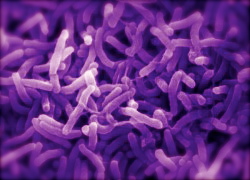Haiti’s cholera epidemic took place some 10,000 miles from my home in Thailand, but I watched it unfold with more than just academic interest. I recently woke up feeling too nauseous to even sip water. Then diarrhea struck. A few hours later, weak and dehydrated, I was being wheeled into a Bangkok hospital, my blood pressure so low I couldn’t stand up without blacking out. I spent four days on an IV drip, cradling my aching guts.
I was treated for acute gastroenteritis caused by bacteria which the hospital failed to identify. But when I later described my symptoms and their alarmingly sudden onset to a British expert in diarrheal disease, he gave a different diagnosis: cholera.
I was shocked. Left untreated, cholera can kill within hours. Many governments under-report the disease, and not just because its name alone terrifies people. Cholera is a byword for backwardness and neglect. The World Health Organization (WHO) calls it “a key indicator of lack of social development.”
That certainly rings true of the place where I had fallen ill. Pattani is one of Thailand’s three southernmost provinces, a Muslim-majority region in an otherwise largely Buddhist nation. There, a brutal conflict between shadowy militants and government troops has killed more than 4,400 people. On 4 January 2011, this ill-reported war enters its eighth year, with no end in sight.
Statistically speaking, Pattani is a great place to catch cholera. Hundreds of people were infected during an outbreak in fishing communities along the Pattani River in late 2009. Most of the 982 cases reported by Thailand in the first six months of 2010 occurred in the south.
It is easy to blame the conflict. This region was annexed by Thailand a century ago and its Malay-speaking people have chafed under Bangkok’s rule ever since. Since the current hostilities erupted, insurgents have torched clinics and killed dozens of health workers, who are government employees and therefore considered legitimate targets. In the past, military intelligence agents have posed as health workers, endangering them further.
But the chief cause of the south’s health crisis is not years of conflict, but the decades of government neglect that preceded them. Take maternal deaths, another key indicator of the quality of a healthcare system. The maternal mortality ratio in the three southernmost provinces is double the national average of about 12 per 100,000 live births, reports the United Nations Development Programme. In one province, Yala, it is three times the national average.
Or look at polio vaccine coverage. The rallying cry of the Polio Global Eradication Initiative is “every last child,” but in Pattani province it’s more like every third child. Dr Piyanit Tharmaphornpilas, who runs the national immunization programme, has described southern Thailand as a “high-risk area” for the disease’s re-emergence.
That the region’s health system hasn’t collapsed entirely is credit to the bravery and dedication of its members. Despite being targets, health workers still enter southern villages more often than any other government officials and, after religious leaders and teachers, remain the most trusted.
The Thai government has offered them better pay and perks. But conditions won’t really improve until the violence does—and that’s unlikely for now. “Prime Minister Abhisit Vejjajiva has made little effort to tackle the political grievances that drive the insurgency,” reported the International Crisis Group in November. Amid continued conflict, only cholera and its attendant health miseries are guaranteed a safe refuge.










For more on this urgent subject, please see an excellent, angry piece by Sanitsuda Ekachai in the Bangkok Post: http://www.bangkokpost.com/opinion/opinion/222013/silent-deaths-in-restive-south